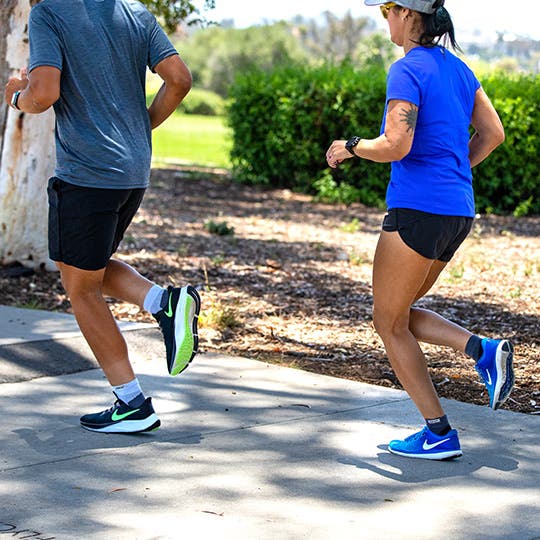If you read our last blog on Running Tips for Beginners, then we know you have already taken an interest or gotten started with your running regimen! You have taken it slow, walk breaks are becoming shorter and shorter, and you are building your endurance to run longer distances.
So what’s next? Building and increasing your mileage safely to avoid injuries to meet your distance goal.


Training programs include five main levels:
1. Recovery - rest, strength work and non-running training
2. Base - conversational, easy pace running
3. Strength - tempo runs, hills and fartleks
4. Long intervals
5. Short intervals
Furthermore, these building blocks can be scheduled into three different types of cycles, which contribute to the entire periodized training program.


Macrocyle
An entire training period leading up to a goal race or performance. This could be any distance such as a half marathon, marathon or ultra. A macrocycle is usually between 16-26 weeks, with 2-3 macrocycles a year.
Mesocycle
A specific training phase for a specific purpose. Each cycle has a different psychological goal focusing on different physical skills. These training blocks are anywhere from 2-10 weeks in duration with 4-5 mesocycles per a macrocycle.
Microcycle
This type of cycle is a series of days that make up a brief block of training time. A 7-day phase is the length of a standard microcycle with variations depending on the athlete, coach, and goals.
During each mesocycle, long runs, which are usually done on the weekends when there is more time for most people, increase slowly by about 2-3 miles. If a runner increases their mileage too quickly, such as going from 10 miles to 15 miles, their risk of injury is very high, and if injured, the runner can be set backwards greatly. During this cycle, mileage will increase every week for about 4 weeks, then followed by a lighter mileage week or a “back down” week. These lighter weeks are just as important as the buildup weeks, as it allows your body and mind to rest and grow.
On the weekdays or days for shorter workouts, it is important to stay consistent, include strength training and mobility (your foam roller will be your new best friend) and be sure to have each harder effort run followed by an easier effort run.


Quick Tips from Injinji Athletes:
1. Be consistent with running and start without worrying about pace.
2. Once a base has been built, athletes can then start adding volume.
3. To be safe, do not add more than 10% per week more than the previous week.
4. Don’t forget to continue to add strength training and gym sessions with exercises that enhance the run training.
5. Add cross training to your program to help build endurance and to make running come more natural.
Keep following our blog for more tips and tricks from elite athletes and coaches on how you can become a better runner and be successful with your fitness goals.








